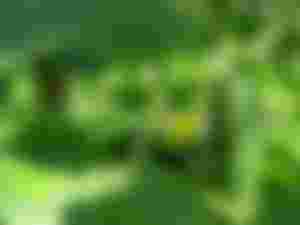
Cucumbers are tender annuals that grow best in
temperatures ranging from 60° to 90°F (15°-32° C).
Sow cucumber seed in the garden or set out
transplants 3 to 4 weeks after the average last frost
date in spring.
The ideal soil temperature for growing cucumbers is
70°F.
Sow cucumber seed indoors as early as 6 weeks
before transplanting into the garden.
Protect cucumbers from unexpected frost or chilly
nighttime temperatures early in the season. Use
floating row covers or plastic tunnels to keep the
chill away.
Cucumbers require 55 to 65 frost-free days from
sowing to reach harvest.
WHERE TO PLANT CUCUMBERS
Grow cucumbers in full sun. Cucumbers can tolerate
partial shade.
Cucumbers prefer loose, well-drained soil rich in
organic matter. Prepare planting beds in advance of
planting by adding 2 to 3 inches of aged compost,
commercial organic planting mix, and aged manure
to beds. Turn the soil to 12 inches deep
Place black plastic sheeting over the planting bed in
spring to warm the soil in advance of planting.
Cucumbers prefer a soil pH of 5.5 to 6.8. Cucumbers
can tolerate alkaline soil to a pH of 7.6.
Set trellises or supports in place to grow cucumbers
up or mound the soil to create a small hill off which
cucumber vines can run. Use a trellis 4 to 6 feet
tall. Create a mound at least 16 inches across and
several inches high; space mounds 4 to 6 feet apart.
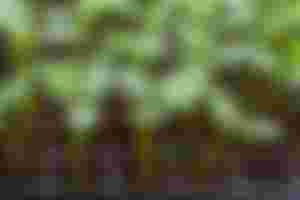
Cucumbers are tender annuals that grow best in
temperatures ranging from 60° to 90°F.
PLANTING AND SPACING
Sow cucumber seeds 1 inch deep.
Sow seeds at the base of the vertical support or on a
mound at 6 to 8-inch intervals.
When seedlings are 3 to 4 inches tall, thin to the
strongest plant spaced 12 to 18 inches apart for
vining cucumbers on vertical supports and 24 to 36
inches apart for bush varieties.
Cut weak seedlings off at soil level with scissors to
avoid disturbing the roots of remaining plants.
Set a trellis, tripod, or cage in place at planting time
if you are growing vining varieties. A 12 to 18-inch
diameter wire cage is ideal for growing vining
cucumbers. You can make a cage from a 4 to 5-foot
section of wire fencing or construction mesh.
To grow an early crop, you can start cucumbers
indoors 2 to 3 weeks before the last frost in spring
then transplant seedlings to the garden 2 to 3 weeks
after the last frost.
GROWING CUCUMBERS IN CONTAINERS
Many dwarf or mini-cucumber varieties will grow in a pot
as small as 6 inches wide and deep, larger is better. Check
the description of the cucumber and its space
requirements. ‘Potluck’ is a small growing variety. Larger
cucumbers for containers include ‘Patio Pik’ and ‘Bush
Whopper.’ Use a 12- to 18-inch trellis, stake, or other
support to increase the yield of container-grown
cucumbers.
WATERING CUCUMBERS
Keep the soil evenly moist with regular watering. Do
not let the soil dry out. Cucumbers are about 95
percent water and require regular water for fast,
even growth.
Set a soaker hose or drip irrigation at the base of
plants. Give cucumbers at least 1 inch of water each
week during the summer.
Always water at the base of plants. Moisture on
cucumber leaves can result in fungal diseases such
as powdery and downy mildew.
Leaves may wilt in the afternoon in hot weather; that
is because plants are taking up water faster than
roots can supply.
If plants are wilted in the morning, the soil is too try
and needs immediate water.
Mulch around plants to slow soil moisture
evaporation and to avoid soil compaction caused by
heavy watering.
Too little water or inconsistent watering can cause
cucumbers to become oddly shaped or bitter tasting.
An easy way to measure soil moisture is to stick
your index finger in the soil; if your finger comes
away dry, it’s time to water.

Side-dress cucumbers with compost tea or a dilute solution
of fish or kelp emulsion or a liquid organic fertilizer
every 10 to 14 days during the season.
FEEDING CUCUMBERS
Add aged compost or commercial organic planting
mix to planting beds before planting. Compost has
all the nutrients cucumbers need for fast growth.
Side-dress cucumbers with compost tea or a dilute
solution of fish or kelp emulsion or a liquid organic
fertilizer every 10 to 14 days during the season.
Feed cucumbers with low nitrogen, high phosphorus,
and potassium formula. Be careful to follow label
directions; over-fertilizing can stunt or harm plants.
Side-dress cucumbers at midseason with aged
compost to renew soil nutrients.
Keep planting beds free of weeds; weeds compete
for soil nutrients and water. Cultivate shallowly to
avoid disturbing roots.
More tips: Cucumber Growing .
CARING FOR CUCUMBERS
Mulch around cucumber plants with straw or
chopped leaves. Mulch will help conserve soil
moisture, keep vines and fruits clean. Slugs and
snails find if difficult to move across straw or pine
straw mulch.
COMPANION PLANTS
Grow cucumbers with beans, corn, peas, pumpkins,
and squash. Do not grow cucumbers with potatoes
and herbs.
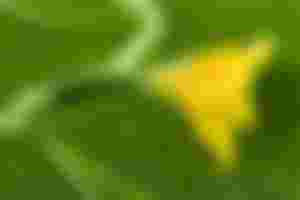
Cucumbers have separate male and female flowers. The
first flowers to appear are male flowers. Female flowers
have a small bulge at the stem end–as shown here.
FLOWERING AND FRUIT FORMATION
Cucumbers have separate male and female flowers.
The first flowers to appear are male flowers that
will not produce fruit.
Female flowers appear a week or so after male
flowers. A female flower will have a cucumber-
shaped swelling at the stem end of the flower; this is
the unpollinated fruit.
Female flowers are pollinated when bees or other
insects carry pollen from the male flower to the
female flower. Some male flowers may die and
drop before female flowers appear. Be patient or
sow seeds every couple of weeks so that there are
male and female flowers in the garden at the same
time.
To attract bees to flowers, spritz plants with dilute
sugar water.
If plants are in a greenhouse or hoop house where
pollinating insects cannot come or if pollination is
slow or does not occur, use a soft-bristled brush to
hand pollinate flowers; dust the inside of a male
flower then carefully dust the inside of a female
flower. A female flower will have an immature fruit
on its stem, a male won’t.
Gynoecious, hybrid cucumbers require pollinator
plants; monoecious plants with female flowers.
Cucumber fruits hanging from a trellis or vertical
support will grow straight under the force of
gravity.
Cucumbers growing on the ground should be set on a
tile or piece of wood so that the fruit does not have
direct contact with the soil; this will allow
cucumbers to mature with less exposure to disease
and insects.
Cool-weather, rain, and insecticides can delay or
harm pollination.
CUCUMBER PESTS
Cucumbers can be attacked by aphids, cucumber
beetles, squash bugs, and slugs.
Control aphids by hosing them off with a blast of
water or pinching out infested vegetation.
Cucumber beetles chew holes in leaves and can
spread cucumber bacterial wilt when feeding on
plant tissue. Hand-pick them off the vines and
destroy them.
Squash bugs suck plant sap causing leaves to wilt.
Squash bugs will also attack seedlings. Dust plants
with diatomaceous earth around the base of plants.
Slugs can scrape ragged holes in leaves. Spread
diatomaceous earth around the base of plants.
CUCUMBER DISEASES
Cucumber plants are susceptible to scab, mosaic, and
mildew.
Keep the garden clean of debris and weeds that can
harbor pests and disease.
Remove diseased plants immediately; put them in a
paper bag and throw them in the trash to avoid the
spread of disease.
Plant disease-resistant varieties. Look for the
following coding to indicate disease resistance: leaf
spot (LS), anthracnose (A), bacterial wilt (BW),
mosaic (M), scab (S), and downy mildew (DM).
Bacterial wilt is spread by cucumber beetles; plants
suddenly wilt and die just as they begin to produce.
Control beetles as soon as they appear.
Powdery mildew and downy mildew, fungal
diseases, will cause cucumber leaves to turn grayish-
white late in the season. Slow the spread of fungal
diseases by spraying plants with horticultural oil or
neem oil.
To help prevent fungal diseases, plant resistant
varieties, and space plants further apart to increase
air circulation.
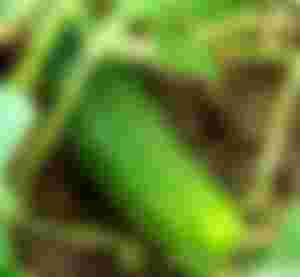
More on cucumber problems: Cucumber Growing
Problems: Troubleshooting .
Check and harvest cucumbers daily to stay ahead of the
harvest.
HARVESTING CUCUMBERS
Cucumbers will be ready for harvest 55 to 65 days
from sowing.
Harvest cucumbers as soon as they reach mature
size; cucumbers left on the vine past maturity will
suppress the production of new flowers and fruit.
Check and harvest cucumbers daily to stay ahead of
the harvest.
Slicing cucumbers are best picked when they are 6 to
8 inches long.
Clips cucumbers off of plants with a garden clipper,
scissors, or knife. Pulling cucumbers off plants can
damage plants.
A fruit that turns yellow at the blossom end opposite
the stem is overripe and will be seedy.
Pickling cucumbers–sweet or dill–are best picked
when 1 to 6 inches long. Pick pickling cucumbers
every two days.
Regular dills are best picked when 3 to 4 inches
long.
Burpless cucumbers should be picked at about 10
inches long.
Hothouse-grown English or Armenian cucumbers are
best picked when 12 to 15 inches long.
Cucumbers left on the vine too long will have tough
skins and will lose flavor.
More harvest tips: How to Harvest and Store Cucumbers .
STORING AND PRESERVING CUCUMBERS
Pickling and slicing cucumbers will keep in the
refrigerator for 7 to 10 days.
Hothouse cucumbers will keep in the refrigerator for
1 to 2 days. Be sure the temperature is not too low or
cucumbers will freeze and turn soft.
Wrap refrigerated cucumbers in plastic or store
them in a zipper bag to keep them crisp.
Pickled cucumbers will keep for up to 1 year.
MONOECIOS AND GYNOECIOUS CUCUMBERS:
THE DIFFERENCE
Most cucumbers are monoecious, meaning plants
produce both female and male flowers. Female
flowers are commonly pollinated by insects after
visiting male flowers.
Hybrid cucumber varieties are gynoecious.
Gynoecious cucumbers produce only female flowers.
These plants must be set near a monoecious plant for
pollination or must be pollinated by hand.
Gynoecious cultivars include ‘Conquest,’ ‘Early
Pride,’ and ‘Bush Baby.’
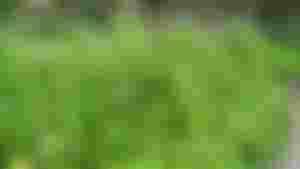
Cucumbers growing up A-frame trellis.
TYPES OF CUCUMBERS
There are many types and varieties of cucumbers. Here
are the differences:
Bush cucumbers can grow 24 to 36 inches tall and
wide forming a compact plant. Bush cucumbers are
well-suited for container growing or small gardens.
Plant bush varieties every two weeks for a
continuous harvest.
Vine cucumbers can grow to 6 feet high or more and
2 to 3 feet wide. Vining cultivars require more space
but produce more fruit. Grow vining cucumbers on a
fence, trellis, or tripods when possible to keep fruit
off the ground.
Pickling cucumbers have thin, pale green skin, bear
fruit early, and concentrate fruiting in a 10-day
period. Pickle cucumbers a few hours after
harvesting for crisp pickles.
Slicing cucumbers, for fresh eating, commonly are
green-skinned and set fruit for 4 to 6 weeks. Slicing
cucumbers include “burpless’ cultivars which are
mild-flavored and easy to digest.
European, English, or greenhouse cucumbers are
seedless cultivars developed for greenhouse growing.
Lemon cucumbers are yellow oval-to-round heirloom
cucumbers. Lemon cucumbers are ideal for a single
serving. Harvest lemon cucumbers just as they turn
yellow; do not wait too long or they will be seedy.
Asian cucumbers are thin, heavily ribbed cultivars;
the fruit grows from 12- to 24-inches long.
Gherkin is a term used for any pickling cucumber;
however, a true gherkin is not a cucumber but the
fruit of a different species, Cucumis anguria .
Cornichons is the generic French term for any small
cucumber.
CUCUMBER YIELD
Grow 2 to 3 cucumber plants per household member
for fresh eating.
Grow 3 to 4 plants per quart for pickling.
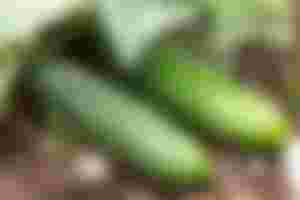
Slicing cucumbers include “burpless’ cultivars which are
mild-flavored and easy to digest. Harvest burpless
varieties at about 10 inches long.
CUCUMBER VARIETIES TO GROW
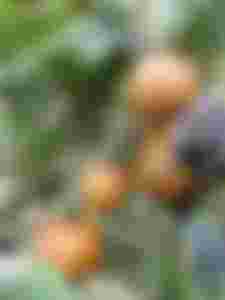
Lemon cucumbers on vine in November.
Cucumbers are divided into the slicing cucumbers for
fresh eating and pickling cucumbers. There are dozens of
varieties to choose from. In the list below “gyn” denotes
gynoecious which produce only female flowers and must
be grown near a monoecios plant; others are monoecios,
they produce both male and female flowers.
Slicing:Ashley (66 days); Comet II (gyn-60 days);
Dasher II (55 days); General Lee (gyn-55 days);
Jazzer (48 days); Marketmore (76 days); Poinsett (65
days); Revenue (gyn-48 days); Slice King (49 days);
Spacemaster (60 days); Speedway (gyn-56 days);
Supersett (53 days); Sweet Slice (62 days); Tasty
Green (55 days); Ultra-Slice Early (56 days).
Pickling:Baby Bush (51 days); Calypso (gyn-56 days);
Conquest (gyn-50 days); Cross Country (51 days);
Edmondson (70 days); Green Spear (gyn-55 days);
Pik Rite (gyn-63 days); Salty (53 days); Spear It
(gyn-52 days); Sumter (56 days).
Burpless: Comet II (gyn-60 days); Green Knight (60
days); Jazzer (48 days); Perfection (60 days); Sweet
Slice (62 days); Tasty Green (55 days).
Greenhouse:Aidas (gyn-65 days); Carmen (gyn-65
days); English Telegraph (65 days).
Container varieties: Patio Pic (50 days); Potluck (50
days); Spacemaster (60 days); Bush Whopper.
Others: Lemon (64 days); Long White (65 days);
White Wonder (60 days).
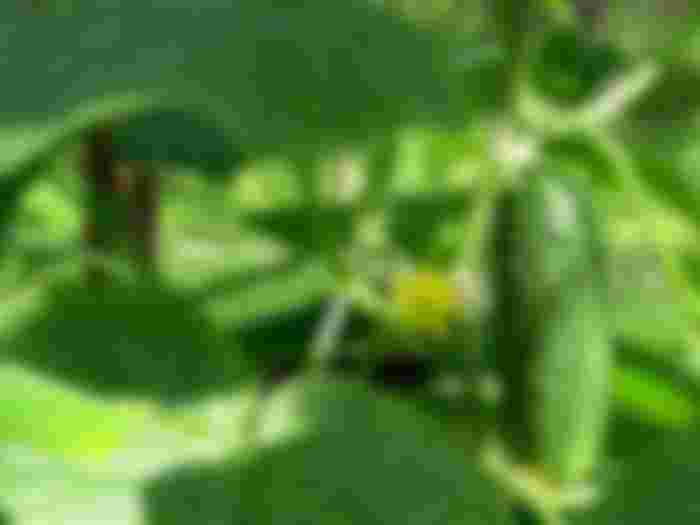
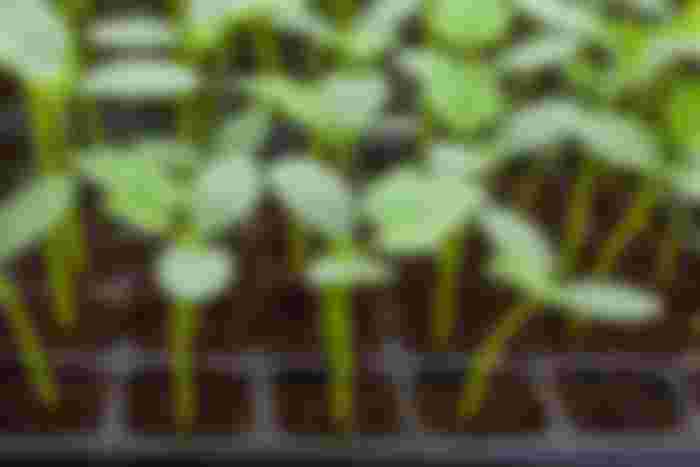
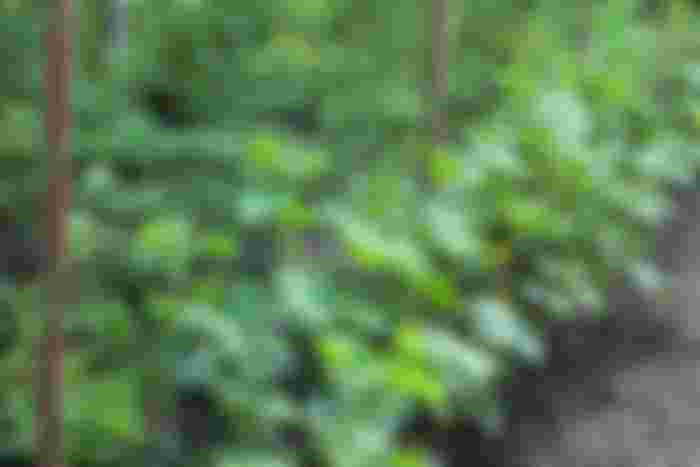
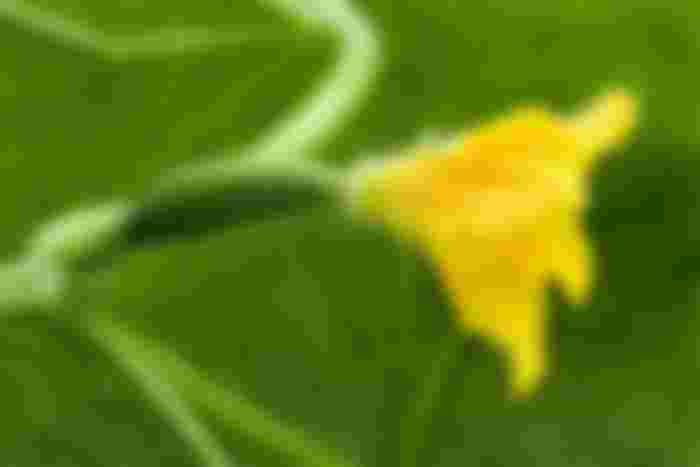
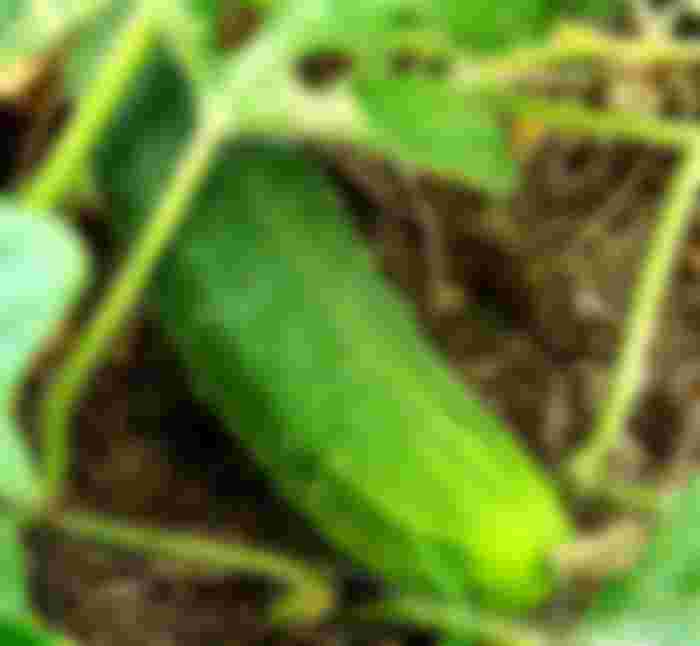
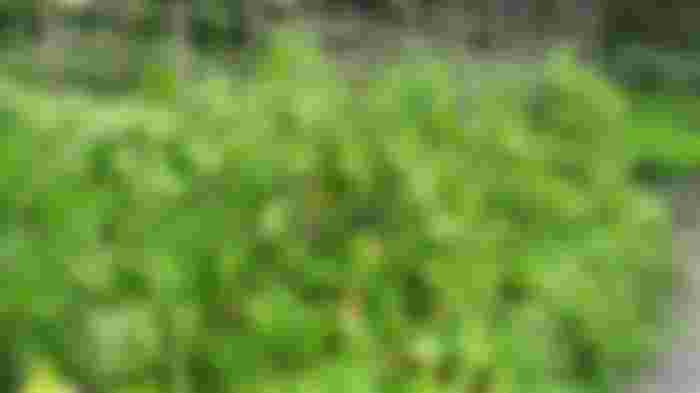
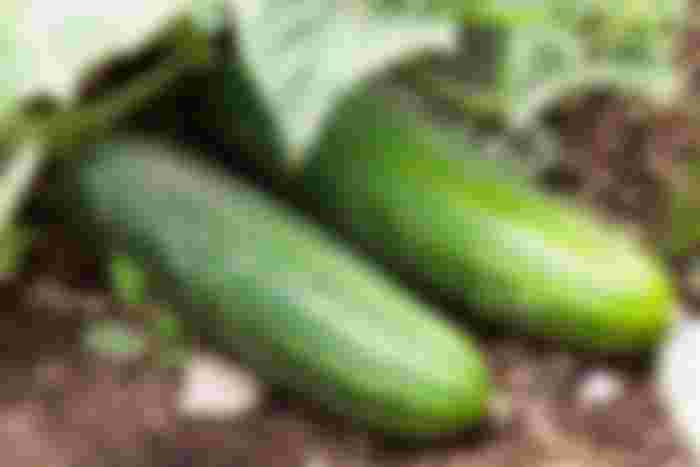
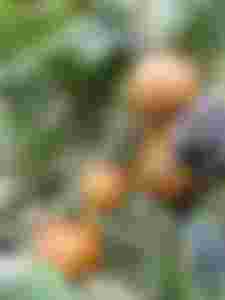
The first thing to be done is to be plant the seeding from the flower On the trees to the fruits those the fruit growing balance cucumber.